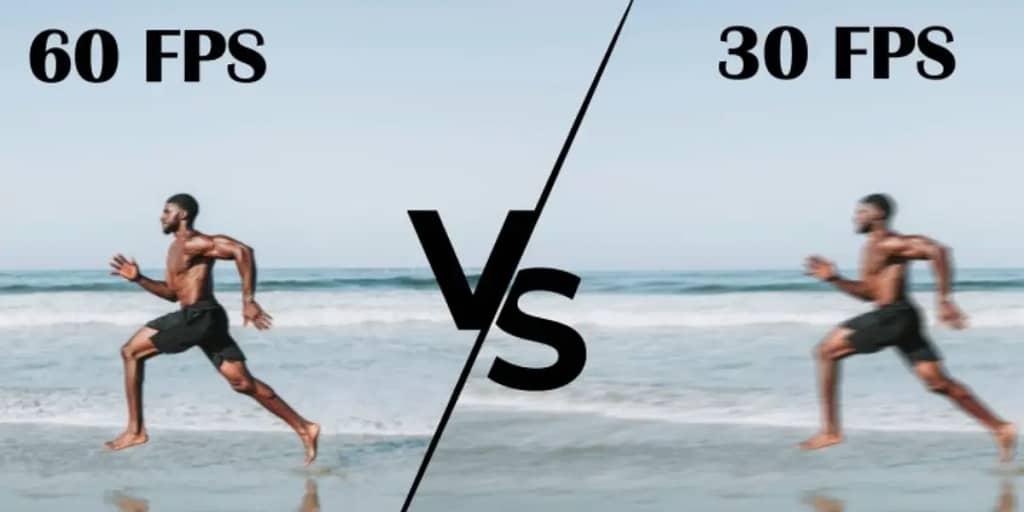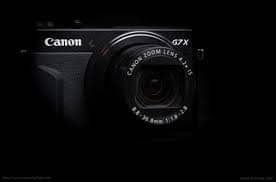Last Updated on: 9th February 2023, 05:48 pm
Capturing video footage for a home movie or professional film is an exciting experience. But the quality of your footage will depend on the frame rate you choose.
Whenever you make a video for online posting, you may encounter 30 and 60 FPS, but you still need to decide which one to use. You also learned there are other FPS values you can use.
There might also be a term called “frame rate,” but the explanations you find are too complicated, even though understanding frame rates and frames per second can be difficult since it might seem like you need technical knowledge. But you can be a professional videographer or filmmaker to comprehend them.
In this article, we’ll explore the difference between 30fps and 60fps video recording, how they differ from one another, and which one might be best for you depending on the type of content you plan to record, so you can make an informed decision about which to use!
What is the frame rate?
When recording video, the frame rate is the number of frames captured per second. The higher the frame rate, the smoother the video will appear. A frame rate of 30 frames per second is sufficient for most applications.
However, a higher frame rate may be necessary for some applications, such as video editing or slow-motion playback. The downside to recording at a high frame rate is that it requires more storage space and can lead to choppier playback if not done correctly.
What are 30fps & 60fps Video Recordings?
30fps Video Recording:
When the video is recorded, 30 frames per second means that each second of the video is captured in 30 individual frames. When the video is played back, this results in smoother, more realistic motion than lower framerates, like 24 frames per second or 15 frames per second.
A frame rate of 30 frames per second is the standard frame rate for most television and movie content. This is a good choice if you wish to create videos that resemble the kinds of videos you usually see on television or in the movies.
In some situations, you may use a higher or lower framerate. Still, for general purposes, 30 frames per second is a good starting point for anyone who wants to begin their video recording.
Pros
- Higher- video recording
- Smoother playback
- More realistic look
- Ability to use high frame rate in slow motion
- Greater detail visible in video recordings
- Store more and long videos
- Faster video sharing and uploading
Cons
- Requires more processing power
- It may not be compatible with some devices or software
- This can result in choppier playback on some devices
60fps Video Recording:
60 fps recording is a technique used to capture video at a rate of 60 frames per second. This results in smoother, more realistic video footage and can be especially helpful when recording fast-moving subjects.
To achieve 60 fps recording, special equipment is required that can handle the high frame rate. This includes high-end cameras and video editing software that can process the extra information.
Overall, 60 fps recording is a great way to get smooth, lifelike footage of fast-paced action. With the right equipment and some practice, anyone can start capturing amazing videos at this higher frame rate.
Pros
- 60 fps in video recording can provide smooth and high-quality videos
- Suitable for recording fast-moving objects
- Offer clear and sharp images
- Have less motion blur
- Ideal for recording videos in low-light conditions
- Video recording can give you a realistic feeling when watching the video
Cons
- Sometimes, the colours of the objects in the video may appear distorted.
- The recorded video may be too large and occupy much storage space.
- The device’s battery life may be reduced when using 60 fps in video recording mode.
Differences between 30fps and 60fps Video
Following are the differences between the given two fps:
Image quality:
A shutter can stay open for up to 1/30 seconds when recording at 30 frames per second, allowing more light to get in. Of course, depending on lighting conditions, the sensor might not need to, but let’s focus on how much light it can gather.
If you increase the number of frames per second to 60, the time the sensor has at its disposal to pick light for each frame is cut in half to 1/60 seconds. In good lighting conditions, this amount of time is fine. Still, you record at dusk or in less-than-optimal conditions.
In that case, the camera will have to increase its sensor’s sensitivity (the ISO setting) to compensate, which results in lower-quality images and what’s known as image noise – artefacts that appear in darker areas of the picture.
Motion Blur:
It is also important to consider motion blur, which is very close to image exposure when recording fast-paced actions, such as sports. A lower frame rate, such as 30 frames per second, will lead to images with more motion blur since the subject moves more when the sensor captures the image.
The blur can also be affected by the recording resolution on the digital camera. The faster the frame rate, the lighter the motion blur will be. On the other hand, if you record at 60 frames per second, you can reduce the motion blur to half of what it is when recording at 30 frames per second.
Subjective Appearance:
We are used to watching TV and attending classic movie theatres. These mediums present images at 30 and 24 frames per second, respectively. In our brains, these frame rates are associated with the idea that the experience is “good.”
Although 24 frames per second seem like a drop in speed for fast-paced action movies, your brain gets used to it and adjusts accordingly. The smooth motion of the video makes it look unnatural.
As a result, when making a recording, please think about its purpose first. If you want a casual recording, 60 frames per second will bring you closer to the event, but if you want to do something more artistic, perhaps 30 frames per second is a better choice.
Processing power & battery life:
High frame rates require more energy and generate more heat. When you are on a low battery or are recording in a very hot environment, you should be aware of this. It requires more processing power to record a video at 60 frames per second because many images are recorded simultaneously.
While recording a 4K video at two different frame rates, 30 fps and 60 fps, I measured how much battery my camera drained.
According to the results, the battery lost 4% of its capacity after shooting a 10-minute video at 30 frames per second, while the battery lost 5% at 60 frames per second. A 25% increase in battery consumption results from recording at higher frame rates.
File Size:
It should be noted that the file size of 60-frame videos is much larger than that of a 30-frame video of the same length since there are nearly twice as many images to contain as in a 60-frame video of the same size. You will need a lot of storage space if you plan on recording; higher frame-rate videos will take up a lot of storage space.
Furthermore, larger videos need a longer time to be uploaded to social media or sent to friends and consume a lot more bandwidth and battery power to upload. Therefore, the lower the frame rate, the smaller the file size, and the less time it takes to share, the less bandwidth and battery power required.
Which One Is Better
In all honesty, it is only possible to decide which is better. Everything depends on the circumstances you find yourself in and what type of photography you intend to do.
To show fast actions as well as slow movements, 60 frames each second is the best way to do it. It can capture minute details, and even slow-motion scenes from a live or sports video will seem smoother. If you were to take slow-motion shots at 30 fps, the results would have been much better.
The general rule of thumb is that 30 frames per second are the best frame rate for TV shows and gaming consoles. If you’re taking a video for social media, you’ll be better off recording it at 30 frames per second, which is the internet’s standard frame rate. However, 30 frames per second is the frame rate most commonly used for movies.
However, 60 frames per second is a more advanced method of recording video and are suitable for videos that show fast-moving objects, like cars, motorcycles, etc. It is also appropriate for videos with slowed-down or slowed-down movements. By comparison, 60 frames per second have much higher quality.
Can You Convert 30 FPS Videos to 60 FPS and Vice Versa?
The short answer is yes, you can convert 30 FPS videos to 60 FPS and vice versa. Before doing so, however, there are a few things to keep in mind.
- First, when converting from 30 FPS to 60 FPS, the video will appear more “fluid” but might also look strange since the motion will be twice as fast.
- Secondly, when converting from 60 FPS to 30 FPS, the video will appear more “choppy” but look more natural since the motion will be half as fast.
- Finally, remember that not all videos can be converted perfectly – some might look a bit blurry or have other issues.
If you’re not happy with the results of your conversion, it’s best to leave the video at its original frame rate.
Conclusion
Both 30fps and 60fps video recording have unique benefits depending on the type of content you’re creating. If you’re shooting for a cinematic look or want to capture slow-motion video, then 60fps is your best option. However, if you’re looking for clean and crisp videos that will only take up a little space on your memory card, then 30fps might be the way to go. Ultimately it comes down to personal preference – but now that you know the difference between 30fps and 60fps video recording, hopefully, it will help make your decision easier!
FAQS:
Which frame rate is best for 1080p video?
A frame rate of 24 frames per second is the industry’s most commonly used frame rate for videography at 1080p. Since the 1970s, 24 frames per second has been the industry standard because it is fast enough to create an audio-visual experience that provides seamless results without wasting any film.
How many FPS are best for YouTube videos?
As a general rule, content should be encoded at the same frame rate at which it was recorded and uploaded. Common frame rates include 24fps, 25fps, 30fps, 48fps, 50fps, and 60 frames per second as well other frame rates are also acceptable). Deinterlacing interlaced content is necessary before uploading. For instance, 1080p30 content should be deinterlaced with 1080i60 content.
Is there any 120fps video?
You can’t find anything on YouTube that supports 120fps because YouTube does not support it. The only place you can find videos that support 120fps or higher is on websites like VideoBlocks and other sites that sell high-resolution video clips with high frame rates.



